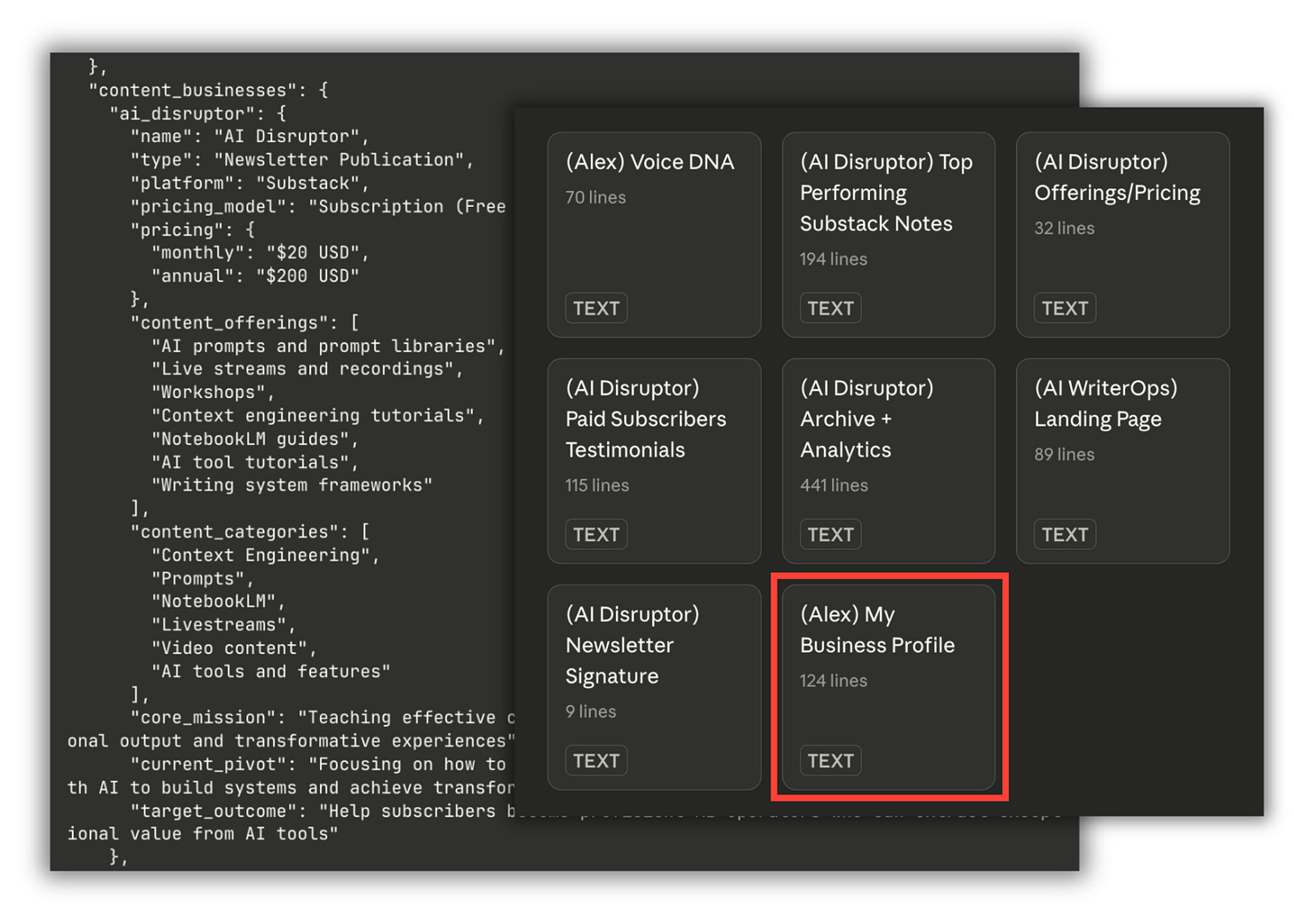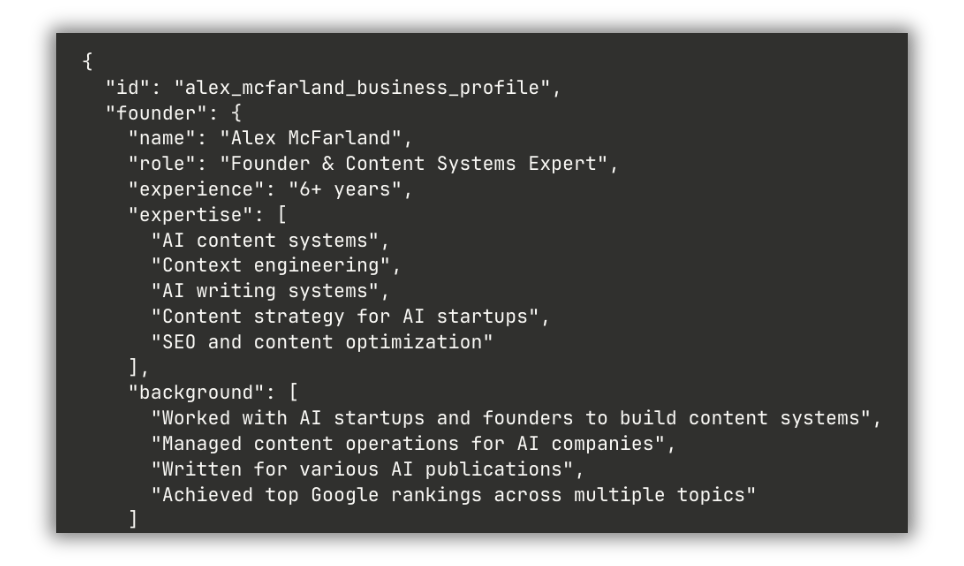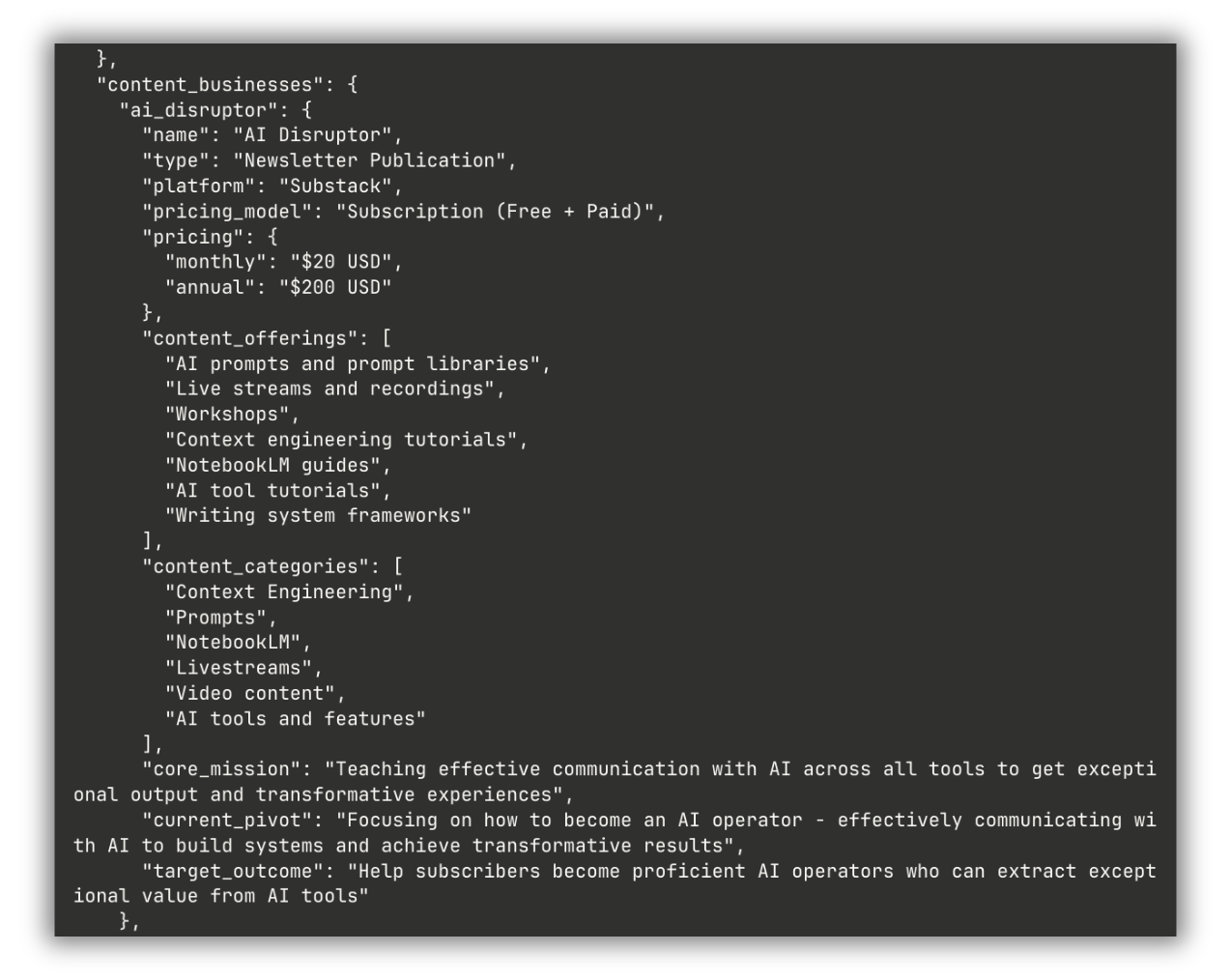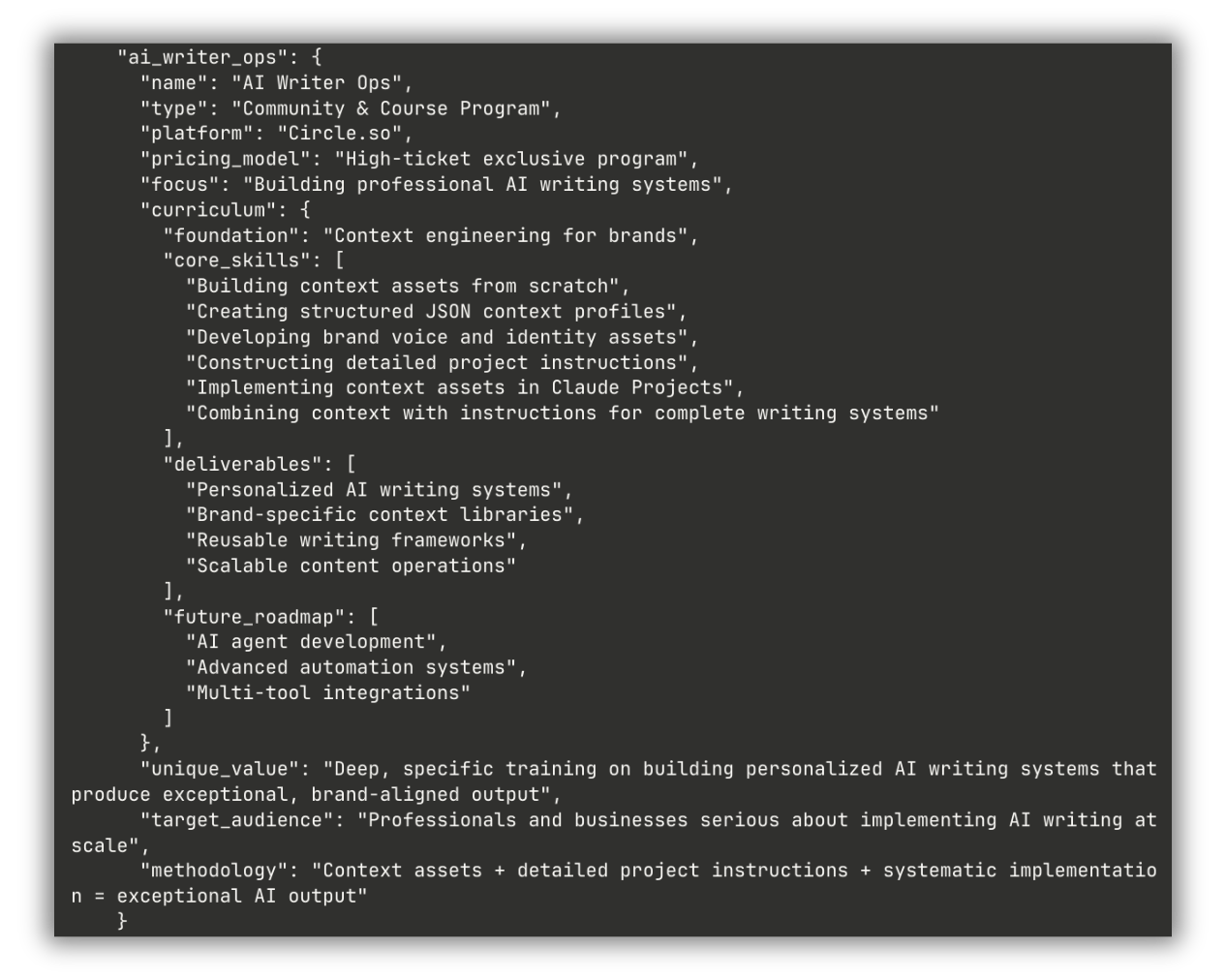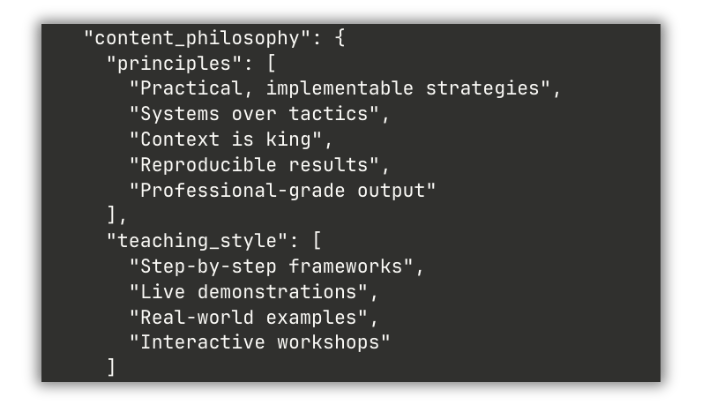How I get Claude (or any AI) to understand my entire business model
Plus the exact prompt to build your own in 10 minutes
I run multiple businesses, and keeping Claude updated on all of them was a nightmare before I learned how to properly context engineer.
I’d have to always explain which business I was talking about, how they relate, what each one does. Until I built this: one master business profile that maps my entire ecosystem. Now Claude understands all my businesses and their connections from the start.
This has saved me hundreds of hours and helped me see connections I didn’t even realize existed.
Let me show you exactly what’s inside.
What's inside this paid edition of AI Disruptor:
My complete 7-section, context-engineered business profile (with screenshots of each section)
The exact JSON structure that maps my business to Claude/ChatGPT
A "dump everything” prompt to create your own business profile for AI (copy/paste ready)
Why JSON beats docs, PDFs, and plain text for AI context
One context profile to rule all my businesses.
Look at what this master business profile actually does.
It’s not just a list of what I offer.
It’s a complete map of my business ecosystem—how AI Disruptor (my newsletter) feeds into AI WriterOps (my high-ticket training program), how the pricing structures work together, how the value ladder flows.
Claude gets the full picture from day one.
No more “wait, which business are we talking about?” No more “how does this relate to your other offering?” No more starting from scratch.
Just instant understanding of everything I’ve built.
→ Alex's note: Remember, you can switch Claude for ChatGPT, Gemini, etc.
My actual business profile pulled from my Claude Projects
This is a somewhat big context profile, so let’s break down each section so you can see exactly why every piece matters.
Section 1: The founder foundation.
“expertise” tells AI what I can credibly talk about. “background” gives proof points AI can reference. “role” isn’t just a title—it positions how I approach everything.
AI now knows I’m not just teaching theory. I’ve done this for AI companies. That context shapes every piece of content.
Section 2: Company structure.
Simple but critical.
“Personal brand-based company” tells AI this isn’t a faceless corporation. The content should be personal, direct, from me.
“AI education and content systems” sets the boundaries. Everything ladders up to this focus.
Section 3: AI Disruptor (my Substack).
Look at the depth here.
Not just “newsletter for $20/month.”
AI knows:
Every type of content I create (content_offerings)
The categories I organize around (content_categories)
My current focus (current_pivot)
The transformation I’m selling (target_outcome)
That “current_pivot” field? That’s what keeps my content fresh and moving in the right direction. AI knows I’m not just teaching random AI tips. I’m focused on creating AI operators.
Section 4: AI WriterOps (my training program).
This isn’t just course information.
It’s a complete blueprint:
The curriculum structure (what I teach)
The deliverables (what students get)
The future roadmap (where it’s going)
The methodology (how it works)
AI can now create course content that aligns with the curriculum. Newsletter content that teases relates to these skills. Sales copy that speaks to the target audience.
Section 5: Business synergy (the connector).
This is the intelligence that makes everything work together.
AI understands the journey:
Newsletter = entry point
Paid subscription = deeper value
Course = full implementation
Now when I create newsletter content, AI knows to tease the deeper implementation available in the course. When I create course content, AI can reference concepts introduced in the newsletter.
Section 6: Brand positioning.
This shapes HOW AI talks about everything.
Not “here’s a prompt” but “here’s a system.” Not “try this trick” but “build this reusable asset.”
Every piece of content gets filtered through this positioning.
Section 7: Content philosophy
The final filter.
These principles and teaching styles ensure consistency across everything:
Newsletter posts follow step-by-step frameworks
Course content includes real-world examples
Everything focuses on reproducible results
This is what the entire profile looks like inside my project:
The “dump everything and let AI sort it out” prompt
Look, I could give you a 10-page questionnaire.
Or I could give you this: a prompt that takes whatever you have and turns it into gold.
Got a messy Google Doc about your business? Paste it. Have 47 different service descriptions? Dump them all. Only have your About page? That works too.
My prompt adapts to whatever you give it. Copy and paste it directly into Claude/ChatGPT with as much business info you can gather.


